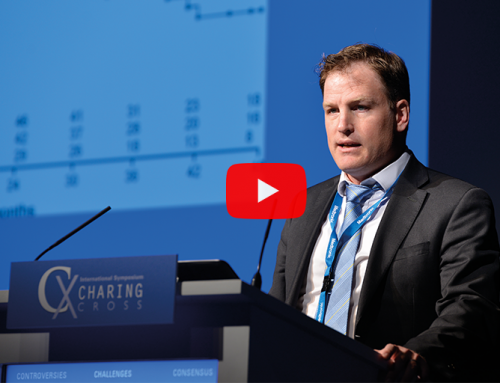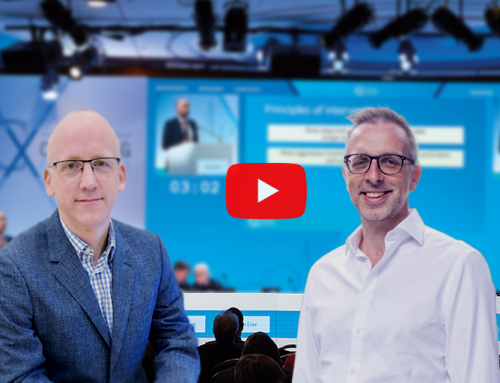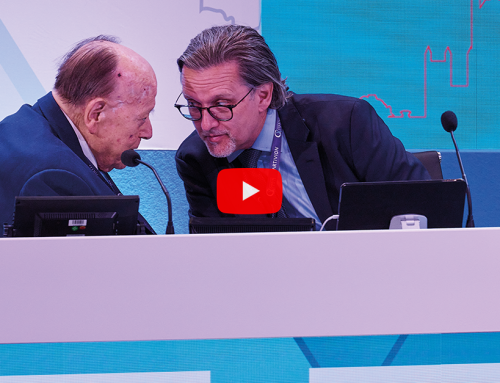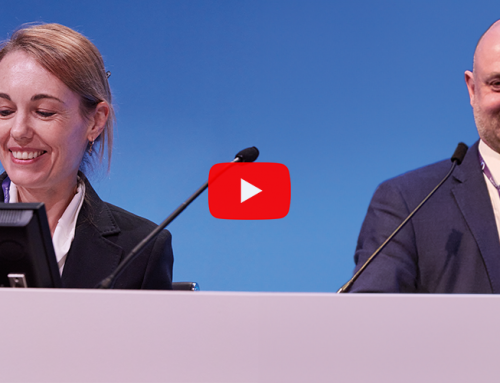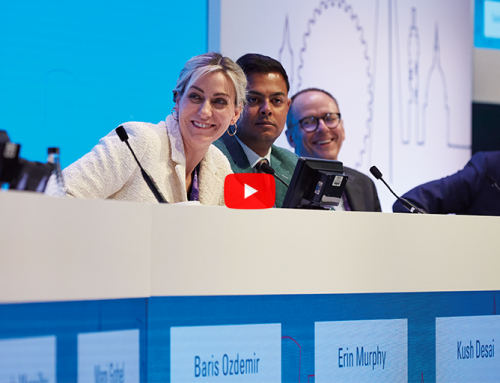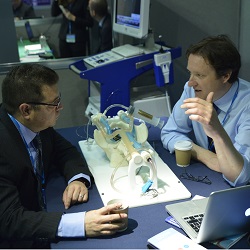
Day Two of the CX Venous Workshop showcased the latest technological advancements in the deep venous arena. Building on the success of Wednesday’s first-ever CX Venous Edited Cases, yesterday’s workshop included four more standing-room only expert case presentations looking at venous endovascular stenting and thrombectomy, as well as a vast array of training workshops.
“The Edited Cases have been awesome—big audiences and lots of engagement” course director Stephen Black (London, UK) told CX Daily News. “I think they have been superbly moderated by Stephen Elias (Englewood, USA) and Lowell Kabnick (New York, USA), whose vast experience has been invaluable. There has been lots of audience discussion around the cases, which has also been excellent.”
The first endovascular stenting case, presented by Prakash Saha (London, UK), gave a masterclass on the VICI venous stent (Veniti), revealing his top tips and tricks for the treatment of extensive post-thrombotic syndrome. Manj Gohel (Cambridge, UK) then asked the audience to consider the role of flexibility in venous endovascular stenting, taking delegates through his experience with the Zilver Vena stent from Cook Medical. Both stents were showcased at training workstations all day, giving the audience the opportunity to try the products for themselves.
The Venous City included a comprehensive and engaging range of workstations, covering topics as diverse as lymphatic imaging and caval filters. Expert researchers, product developers and experienced physicians were on-hand to take delegates through the innovations on display.
John Rasmussen (Houston, USA) demonstrated his team’s work with lymphatic imaging, using indocyanine green and laser technology to collect fluorescent signals from the skin. “What the laser allows us to do is image the flow of the indocyanine green through the lymphatics to the lymphnodes,” he told CX Daily News. “We have been able to demonstrate that the fluids actually go back into the skin tissue; in some cases you can see it leaking out of the lymphatics into interstitial space, which would explain why we observe swelling. The team has been able to image lymphatic reflux—we see a pulse of lymph go up the vessel and part of if drain back down; very similar to what we see in venous insufficiency. All this is made possible because of an essentially synoptical technique using light.”
Praising the interdisciplinary collaboration made possible by the Venous City, Rasmussen said, “We are learning that there is a connection between blood vasculature and the lymphatics. This workshop gives us an opportunity to trade ideas and to think of new things to look at. Maybe if we approach some of these diseases with both venous and lymphatic components in mind, we might have a better outcome.”
The CX Venous Workshop’s ability to adapt to the changing boundaries of the venous field was also praised by Dirk Dreyer (Wang, Switzerland), who demonstrated Straub Medical’s Aspirex and Capturex. “Originally the CX Symposium was aimed just at vascular surgery. Now, in some countries, vascular surgeons are becoming more important in terms of interventions. The venous side is also getting more popular because of increasing scientific results. So, we took the chance to bring our mechanical thrombectomy technology to surgeons here at the CX Venous Workshop.”
Straub’s devices were showcased during one of the afternoon’s Edited Cases, in which Thomas Heller (Rostock, Germany) took delegates through a single case in-depth, using pure mechanical thrombectomy in the treatment of acute venous occlusions.
The final Edited Case of the day focused the rapid removal of a thrombus using the AngioJet ZelanteDVT (Boston Scientific), presented by Olivier Hartung (Marseille, France). Demonstrating the product all day within the Venous City, the AngioJet Zelante DVT team highlighted the system’s new dedicated deep venous thrombosis catheter. “The main difference between the CX Venous Workshop and other events is that is you can explain problems to other physicians and discuss new solutions. You can show cases and discuss the patients at the same time as giving delegates the opportunity to see how our console is set up and used.”
Another innovative technology on display was an intravascular ultrasound system (IVUS). “Intravascular ultrasound—as we saw in an Edited Case they were showing—is used to diagnose venous obstruction, but also as an interoperative tool to guide treatment,” demonstrator Eric Khairy (San Diego, USA) explained. The CX Venous Workshop, he said, was a great hands-on session for the device, because IVUS is a well-known, but potentially intimidating tool. “It is a great opportunity for us to actually get to show how IVUS actually works…The opportunity for hands-on interaction [means] physicians actually get to experience what the tools feel like and see what the images look like. We even have simulations of what the images look like to walk delegates through the system, as getting to their first case using the product can be intimidating.”
The opportunity to interact with experienced users, as well as explore the devices tangibly, was praised by Gerard Goh (Melbourne, Australia), who was demonstrating inferior vena cava filters. “We are giving all the attendees the chance to have a hands-on experience of deploying and removing filters on a dry model. It gives physicians the ability to ask a lot of questions, and to practice deployment in slightly more complicated conditions, where they can try to retrieve a filter that maybe maligned or in a more difficult location,” he told CX Daily News. “Before the session even started we had three people come across and come to us and deploy some filters. We are also able to give little tips and tricks, almost like a one-on-one tutoring experience.”
“I think the opportunity to engage in a very open and informal way with a bunch of world experts who have come to a place to encourage learning and education is invaluable,” Black told CX Daily News. “Ian Franklin has done an overwhelming job growing the session to where it is. It has been a labour of love, and he needs to be congratulated for how well it has flourished, and what an essential part of the Symposium it has become.”
“Education and training are absolutely essential ingredients for treating patients properly,” concluded Black, “and that is what the CX Venous Workshop facilitates.”



